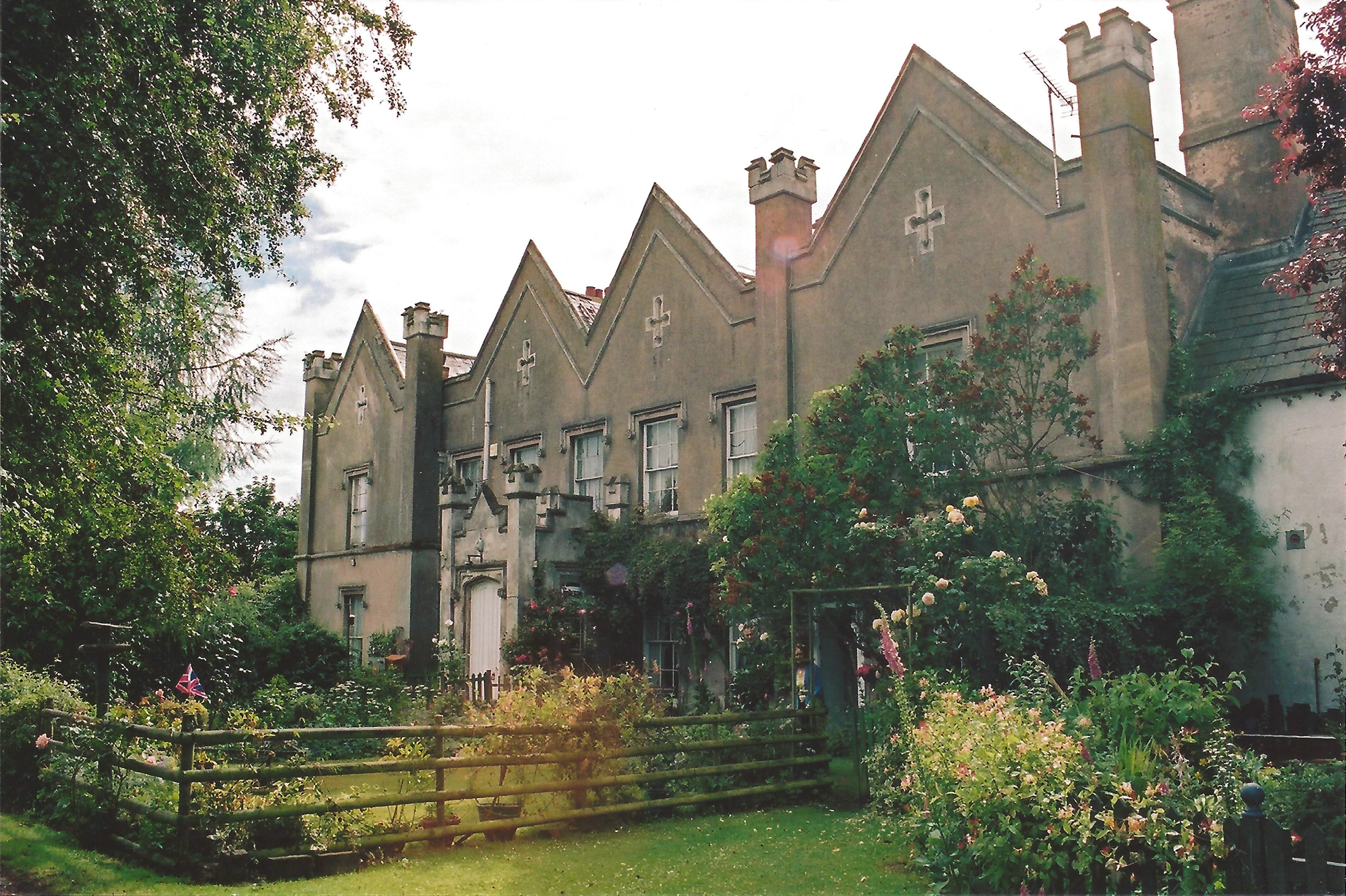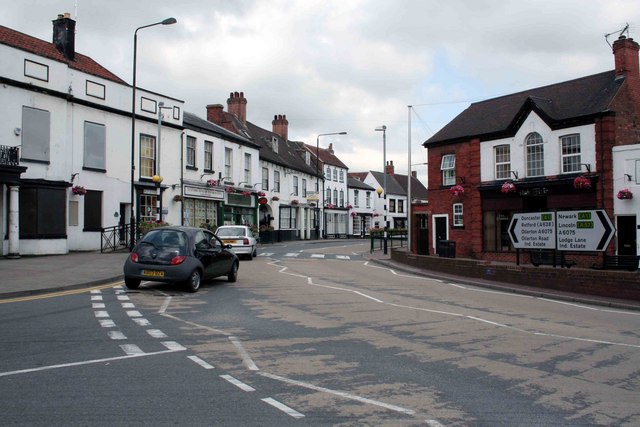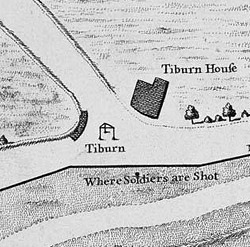|
Otterburn Tower
Otterburn Tower (sometimes spelled Otiburne; originally Otterburn Castle; currently Otterburn Tower Hotel) is a Grade II listed castellated, three star country house hotel in Otterburn, Northumberland. It is set in of deer park and woodland in the Northumberland National Park in northeastern England. Founded by a cousin of William the Conqueror in 1086, it was later owned by the Clan Hall, before being rebuilt in 1830 by Thomas James, a magistrate, on the site and using some of the stones from the Otterburn Castle. Nearby Otterburn Hall was built in 1870 on land given to a Lord Douglas as recompense for the death of his ancestor Lord William Douglas in the Battle of Otterburn. Geography Otterburn Tower is situated on north of Otterburn village, Northumberland. It is on the right bank of the River Rede within the Northumberland National Park, and is accessible by the A696 road along the Redesdale valley. Elsdon town is to its east, while Cramlington is to the southeast. ... [...More Info...] [...Related Items...] OR: [Wikipedia] [Google] [Baidu] |
Otterburn, Northumberland
Otterburn is a small village in Northumberland, England, northwest of Newcastle upon Tyne on the banks of the River Rede, near the confluence of the Otter Burn, from which the village derives its name. It lies within the Cheviot Hills about from the Scottish border. The parish of Otterburn is at the heart of Redesdale, a Northumbrian upland valley. History The name simply means otter stream, a stream frequented by otters (Old English + ). Otterburn was the site of a major battle in 1388 between English and Scottish armies. The engagement, in which the Scots took Sir Henry Percy captive, is the subject of the English '' Ballad of Chevy Chase'' and the Scots ballad ''Otterburn''. The battle of Otterburn ended in an English rout. Despite James Douglas, 2nd Earl of Douglas being killed, Percy was captured and over a thousand of the English were taken, left dead on the field or slain as they fled. The dead were carried to Elsdon church, from Otterburn, where they were burie ... [...More Info...] [...Related Items...] OR: [Wikipedia] [Google] [Baidu] |
Henry De Percy, 1st Baron Percy
Henry de Percy, 1st Baron Percy of Alnwick (25 March 1273 – October 1314) was a medieval English magnate. He fought under King Edward I of England in Wales and Scotland and was granted extensive estates in Scotland, which were later retaken by the Scots under King Robert I of Scotland. He added Alnwick to the family estates in England, founding a dynasty of northern warlords. He rebelled against King Edward II over the issue of Piers Gaveston and was imprisoned for a few months. After his release, he declined to fight under Edward II at the Battle of Bannockburn, remaining at Alnwick, where he died a few months later, aged 41. Origins Henry was born at Petworth in Sussex in 1273, seven months after his father's death, saving the family line from extinction, as two older brothers had died in infancy, and all six uncles had died without leaving any legitimate heirs. He was fortunate in having the powerful John de Warenne, 6th Earl of Surrey as his maternal grandfather. Henry ... [...More Info...] [...Related Items...] OR: [Wikipedia] [Google] [Baidu] |
Battalion
A battalion is a military unit, typically consisting of 300 to 1,200 soldiers commanded by a lieutenant colonel, and subdivided into a number of companies (usually each commanded by a major or a captain). In some countries, battalions are exclusively infantry, while in others battalions are unit-level organizations. The word battalion came into the English language in the 16th century from the French language ( French: ''bataillon'' meaning "battle squadron"; Italian: ''battaglione'' meaning the same thing; derived from the Vulgar Latin word ''battalia'' meaning "battle" and from the Latin word ''bauttere'' meaning "to beat" or "to strike"). The first use of the word in English was in the 1580s. Description A battalion comprises two or more primary mission companies which are often of a common type (e.g., infantry, tank, or maintenance), although there are exceptions such as combined arms battalions in the U.S. Army. In addition to the primary mission companies, a battal ... [...More Info...] [...Related Items...] OR: [Wikipedia] [Google] [Baidu] |
Home Guard (United Kingdom)
The Home Guard (initially Local Defence Volunteers or LDV) was an armed citizen militia supporting the British Army during the Second World War. Operational from 1940 to 1944, the Home Guard had 1.5 million local volunteers otherwise ineligible for military service, such as those who were too young or too old to join the regular armed services (regular military service was restricted to those aged 18 to 41) and those in reserved occupations. Excluding those already in the armed services, the civilian police or civil defence, approximately one in five men were volunteers. Their role was to act as a secondary defence force in case of invasion by the forces of Nazi Germany. The Home Guard were to try to slow down the advance of the enemy even by a few hours to give the regular troops time to regroup. They were also to defend key communication points and factories in rear areas against possible capture by paratroops or fifth columnists. A key purpose was to maintain control of the c ... [...More Info...] [...Related Items...] OR: [Wikipedia] [Google] [Baidu] |
The Second World War
World War II or the Second World War, often abbreviated as WWII or WW2, was a world war that lasted from 1939 to 1945. It involved the World War II by country, vast majority of the world's countries—including all of the great powers—forming two opposing military alliances: the Allies of World War II, Allies and the Axis powers. World War II was a total war that directly involved more than 100 million Military personnel, personnel from more than 30 countries. The major participants in the war threw their entire economic, industrial, and scientific capabilities behind the war effort, blurring the distinction between civilian and military resources. Air warfare of World War II, Aircraft played a major role in the conflict, enabling the strategic bombing of population centres and deploying the Atomic bombings of Hiroshima and Nagasaki, only two nuclear weapons ever used in war. World War II was by far the List of wars by death toll, deadliest conflict in hu ... [...More Info...] [...Related Items...] OR: [Wikipedia] [Google] [Baidu] |
Wallingwells
Wallingwells is a small civil parish and hamlet in the Bassetlaw district of Nottinghamshire, England, with a population at the 2001 census of 22. The population remained less than 100 at the 2011 census. Details are included in the civil parish of Carlton in Lindrick. It lies about five miles north of Worksop. The parish is one of the few in England still to have an exclave – in this case a small section of land separated from the parish by the Carlton in Lindrick parish. Wallingwells Hall Wallingwells Hall is a grade II listed 17th-century country house built on the site of Wallingwells Priory. It was for several hundred years the seat of the House of White of Tuxford and Wallingwells. It is constructed of coursed rubble, ashlar, brick and render with slate hipped roofs to an irregular floor plan, and is now divided into four private houses. History Wallingwells was granted by Queen Elizabeth I in 1563–64 to Richard Pype (a leather seller) and Francis Bowyer (a gro ... [...More Info...] [...Related Items...] OR: [Wikipedia] [Google] [Baidu] |
Tuxford
Tuxford is a historic market town and a civil parish in the Bassetlaw District, Bassetlaw district of Nottinghamshire, England. At the 2001 census, it had a population of 2,516, increasing to 2,649 at the 2011 census. Geography Nearby towns are Ollerton, Nottinghamshire, Ollerton, Retford, Worksop, Mansfield and Newark-on-Trent. The nearest cities are Lincoln, England, Lincoln and Nottingham. The town is located near the border with Lincolnshire in The Dukeries. The A6075 passes through east–west and connects the A57 road, A57 to Ollerton and Mansfield. The East Coast Main Line passes close to the east. The A611 previously went east–west through the town; this is now the A6075; the A611 now goes from Mansfield to Hucknall. The Great North Road (United Kingdom), Great North Road runs through the town (now B1164), though the majority of traffic now uses the modern A1 road (Great Britain), A1 trunk road, which splits the town in two. The town was bypassed in 1967. The se ... [...More Info...] [...Related Items...] OR: [Wikipedia] [Google] [Baidu] |
Sir Archibald Woollaston White, 4th Baronet
Sir Archibald Woollaston White, 4th Bt. MFH (14 October 1877 – 16 December 1945) was the son of William Knight Hamilton White, the second son of Sir Thomas White, 2nd Baronet. He was born at Tickhill in Yorkshire, where he lived throughout his childhood. He succeeded to the baronetcy upon the death of his uncle (his father's elder brother), Sir Thomas Woollaston White, 3rd Bt. in 1907. Education Sir Archibald was educated at Wellington College, where he was Captain of Cricket and Rugby, as well as a school prefect. After school he went up to Trinity Hall, Cambridge, where he got his degree and played cricket for his college. Family In 1903 White married Gladys Love Becher Pitman, the daughter of Rev. Augustus Bracken Pitman, the Rector of Stonegrave near Malton in North Yorkshire. After his succession to the baronetcy in 1907 she was known as Lady White. Children of Sir Archibald and Lady White Cricket career Sir Archibald Woollaston White, 4th Bart. was an E ... [...More Info...] [...Related Items...] OR: [Wikipedia] [Google] [Baidu] |
Indian Mutiny
The Indian Rebellion of 1857 was a major uprising in India in 1857–58 against the rule of the British East India Company, which functioned as a sovereign power on behalf of the British Crown. The rebellion began on 10 May 1857 in the form of a mutiny of sepoys of the Company's army in the garrison town of Meerut, northeast of Delhi. It then erupted into other mutinies and civilian rebellions chiefly in the upper Gangetic plain and central India, though incidents of revolt also occurred farther north and east. The rebellion posed a considerable threat to British power in that region, and was contained only with the rebels' defeat in Gwalior on 20 June 1858., , and On 1 November 1858, the British granted amnesty to all rebels not involved in murder, though they did not declare the hostilities to have formally ended until 8 July 1859. Its name is contested, and it is variously described as the Sepoy Mutiny, the Indian Mutiny, the Great Rebellion, the Revolt of 1857, ... [...More Info...] [...Related Items...] OR: [Wikipedia] [Google] [Baidu] |
Crimea
Crimea, crh, Къырым, Qırım, grc, Κιμμερία / Ταυρική, translit=Kimmería / Taurikḗ ( ) is a peninsula in Ukraine, on the northern coast of the Black Sea, that has been occupied by Russia since 2014. It has a population of 2.4 million. The peninsula is almost entirely surrounded by the Black Sea and the smaller Sea of Azov. The Isthmus of Perekop connects the peninsula to Kherson Oblast in mainland Ukraine. To the east, the Crimean Bridge, constructed in 2018, spans the Strait of Kerch, linking the peninsula with Krasnodar Krai in Russia. The Arabat Spit, located to the northeast, is a narrow strip of land that separates the Sivash lagoons from the Sea of Azov. Across the Black Sea to the west lies Romania and to the south is Turkey. Crimea (called the Tauric Peninsula until the early modern period) has historically been at the boundary between the classical world and the steppe. Greeks colonized its southern fringe and were absorbed by the Ro ... [...More Info...] [...Related Items...] OR: [Wikipedia] [Google] [Baidu] |
42nd Highlanders
The 42nd (Royal Highland) Regiment of Foot was a Scottish infantry regiment in the British Army also known as the Black Watch. Originally titled Crawford's Highlanders or the Highland Regiment and numbered 43rd in the line, in 1748, on the disbanding of Oglethorpe's Regiment of Foot, they were renumbered 42nd and in 1751 formally titled the 42nd (Highland) Regiment of Foot. The 42nd Regiment was one of the first three Highland Regiments to fight in North America. In 1881 the regiment was named ''The Royal Highland Regiment (The Black Watch)'', being officially redesignated ''The Black Watch (Royal Highland Regiment)'' in 1931. In 2006 the Black Watch became part of the ''Royal Regiment of Scotland''. History Early history After the Jacobite rising of 1715 the British government did not have the resources or manpower to keep a standing army in the Scottish Highlands. As a result, they were forced to keep order by recruiting men from local Highland clans that had been loya ... [...More Info...] [...Related Items...] OR: [Wikipedia] [Google] [Baidu] |
Tyburn
Tyburn was a manor (estate) in the county of Middlesex, one of two which were served by the parish of Marylebone. The parish, probably therefore also the manor, was bounded by Roman roads to the west (modern Edgware Road) and south (modern Oxford Street), the junction of these was the site of the famous Tyburn Gallows (known colloquially as the "Tyburn Tree"), now occupied by Marble Arch. For this reason, for many centuries, the name Tyburn was synonymous with capital punishment, it having been the principal place for execution of London criminals and convicted traitors, including many religious martyrs. It was also known as 'God's Tribunal', in the 18th century. Tyburn took its name from the Tyburn Brook, a tributary of the River Westbourne. The name Tyburn, from Teo Bourne, means 'boundary stream',Gover, J. E. B., Allen Mawer and F. M. Stenton ''The Place-Names of Middlesex''. Nottingham: English Place-Name Society, The, 1942: 6. but Tyburn Brook should not be confused wit ... [...More Info...] [...Related Items...] OR: [Wikipedia] [Google] [Baidu] |

_after_a_Church_Parade_at_Llandyssil_Parish_Church_(1501745)2.jpg)






